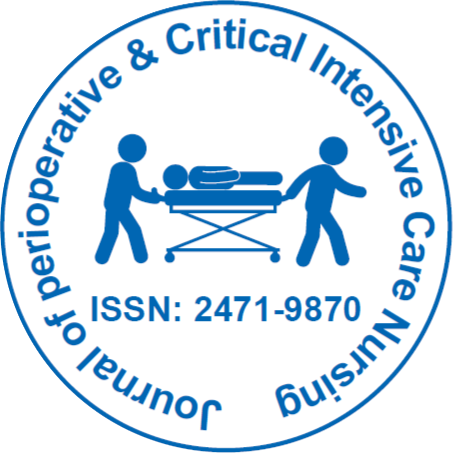
Journal of Perioperative & Critical Intensive Care Nursing
Open Access
ISSN: 2471-9870

ISSN: 2471-9870
Short Communication - (2021)Volume 7, Issue 5
Hopefully, a globally deployed, safe vaccination programme with broad clinical and socioeconomic benefits will be the long-term solution to the coronavirus disease 2019 (COVID-19) pandemic. There are many of vaccines in development. As previous mass immunisation efforts have proved, meticulous planning to assure public and health community readiness for a COVID-19 vaccine should begin right now. An efficacious and safe vaccine must be delivered swiftly and broadly to the public as soon as it is available. Vaccine hesitancy is a major barrier to vaccine uptake and the achievement of herd immunity. Concerns about the necessity of a COVID-19 vaccine may be reduced by recent memory of the overwhelming morbidity and mortality associated with Ebola. The health community should capitalize on an anticipated, early public enthusiasm for a vaccine with a well-organized, rapid vaccine distribution plan. Vaccine safety concerns should be addressed before and during vaccine program roll out. Transparency about vaccine effectiveness and adverse events will likely improve trust in a COVID-19 vaccine. But messaging should take care to avoid overemphasizing the risk of rare adverse events. A COVID-19 vaccine should rapidly be delivered to the public as soon as efficacy and safety have been established. The vaccine should be equitably and justly distributed, particularly targeting individuals at highest risk for complications and disease transmission if initial vaccine supply does not meet demand. Social media serve as a conduit for both factual and false information. Public health campaigns must engage with traditional and social media platforms now. Emerging evidence suggests that correcting misinformation on social media may be effective in changing beliefs, says Dr. Michael WolraichBrockhoff. Frontline health care workers will play a central role in encouraging COVID-19 vaccination. Physicians are the most important influencers of vaccine decision-making. Health care workers are exposed to the same media stories as the general public and may be subject to biases that lead to over-reliance on anecdotal evidence [1,2].
Severe coronavirus illness is most common in the elderly and persons with comorbidities in 2019 (COVID-19). A safe and efficient vaccine could protect these populations in two ways: direct protection, in which high-risk groups are immunised toavoid disease, and indirect protection, in which those who come into contact with high-risk individuals are vaccinated to limit transmission. Vaccine efforts began with a concentration on the elderly in the hopes of providing direct protection, but have now expanded to include the general public, in part to improve indirect protection. Randomized controlled studies can offer early estimates of subgroup-specific efficacy, but they will have wide confidence intervals, leaving substantial ambiguity regarding genuine effects in high-risk categories. This uncertainty would be magnified in interim analyses based on the total number of incidents throughout the entire trial population, and it could be increased if high-risk individuals are more cautious and have less infection exposure, thus diminishing their contribution to efficacy estimates. There are a number of approaches to dealing with subgroup-specific efficacy, some of which are currently in place. Setting minimum enrollment targets for older persons and/or adults with comorbidities can help ensure that high-risk adults are substantially represented in the trial group. Another point to consider is the stopping rules for interim analysis in clinical studies. Subgroup uncertainty is most common in vaccine trials with early interim analyses that seek to stop randomization and vaccinate placebo subjects after declaring efficacy. In order to increase the precision of efficacy estimates in high-risk subgroups, regulators may require interim analyses only when a specified number of verified disease cases have occurred in these subgroups, in addition to the existing monitoring of the overall number of events in the trial. Fortunately, several vaccine candidates are now being developed that combine innovative and established technologies. Having accurate knowledge on direct and indirect protection can help plan how to utilise these vaccinations in a coordinated manner, despite the fact that vaccines differ in their properties [3].
Citation: Griffith ED (2021) COVID-19 Vaccination Program Campaign and Analyzing the Efficacy of the Vaccination. J Perioper Crit Intensive Care Nurs 7: 187. doi:10.35248/2471-9870.21.7.187
Received: 07-Sep-2021 Accepted: 21-Sep-2021 Published: 28-Sep-2021 , DOI: 10.35248/2471-9870.21.7.187
Copyright: ©2021 Griffith ED RK et al. This is an open access article distributed under the term of the Creative Commons Attribution License, which permits unrestricted use, distribution, and reproduction in any medium, provided the original work is properly cited.